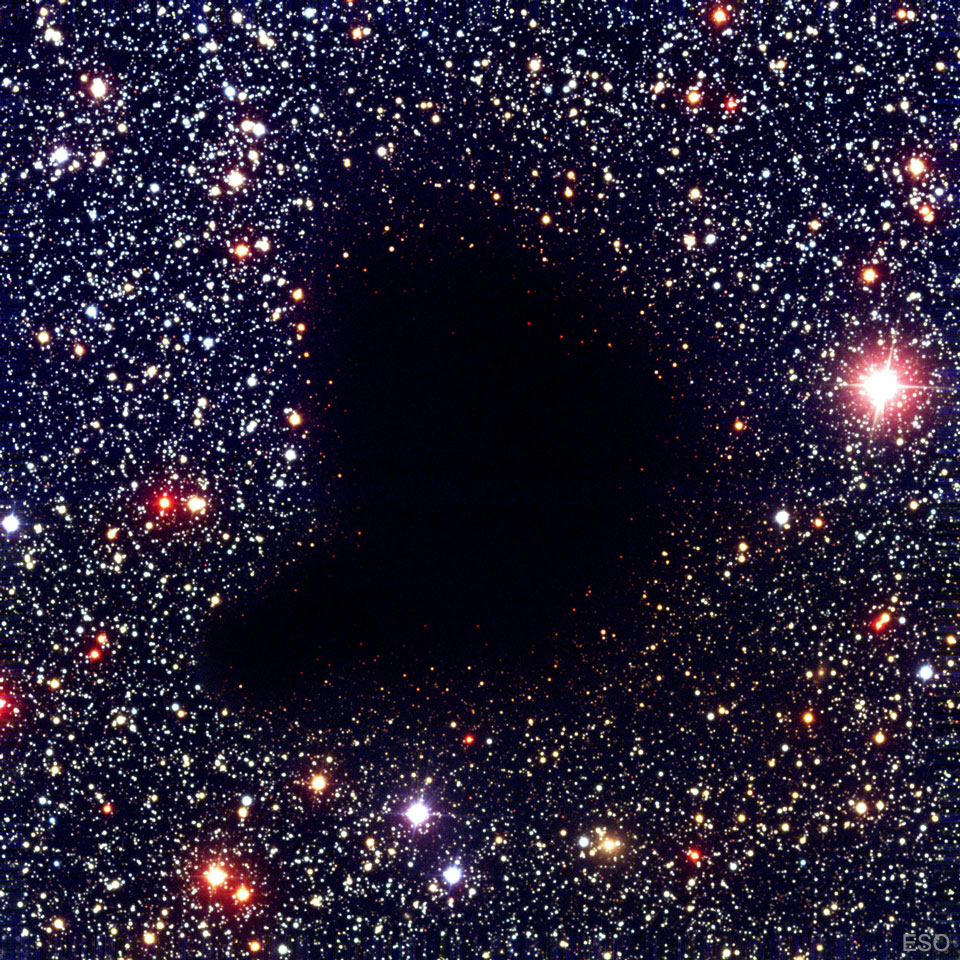2023年1月29日
Barnard 68: Dark Molecular Cloud
Image Credit: FORS Team, 8.2-meter VLT Antu, ESO
Explanation: Where did all the stars go? What used to be considered a hole in the sky is now known to astronomers as a dark molecular cloud. Here, a high concentration of dust and molecular gas absorb practically all the visible light emitted from background stars. The eerily dark surroundings help make the interiors of molecular clouds some of the coldest and most isolated places in the universe. One of the most notable of these dark absorption nebulae is a cloud toward the constellation Ophiuchus known as Barnard 68, pictured here. That no stars are visible in the center indicates that Barnard 68 is relatively nearby, with measurements placing it about 500 light-years away and half a light-year across. It is not known exactly how molecular clouds like Barnard 68 form, but it is known that these clouds are themselves likely places for new stars to form. In fact, Barnard 68 itself has been found likely to collapse and form a new star system. It is possible to look right through the cloud in infrared light.
Postcards from the Universe 2022: APOD Year in Review
Tomorrow’s picture: bright marking on the sky
巴纳德68: 黝黑的分子云
图像提供: FORS Team, 8.2-meter VLT Antu, ESO
说明:恒星都上那儿去了?这种以往认为是天空之洞的结构,现在天文学家知道它们是暗分子云。在此例分子云中,致密的尘埃和分子气体几乎完全吸收了背景恒星所发出的可见光。而诡异幽暗的环境,更让分子云内部成为宇宙最寒冷和最孤寂的地方。其中最著名的暗星云之一,是上面这幅图像所示、位在蛇夫座方向的巴纳德68。这团星云的中心完全看不到恒星,显示它离我们不远,而测量也指出巴纳德68离我们大约5百光年远,宽度则在半光年左右。像巴纳德68这种分子云是如何形成的,目前还不清楚,但确知的是,它们是新恒星的可能诞生之处。事实上研究也指出,巴纳德68极可能会塌缩形成新恒星系统。最后,用红外光其实是有机会透视这团星云。
来自2022年宇宙的明信片: APOD年度回顾
明日的图片: bright marking on the sky



